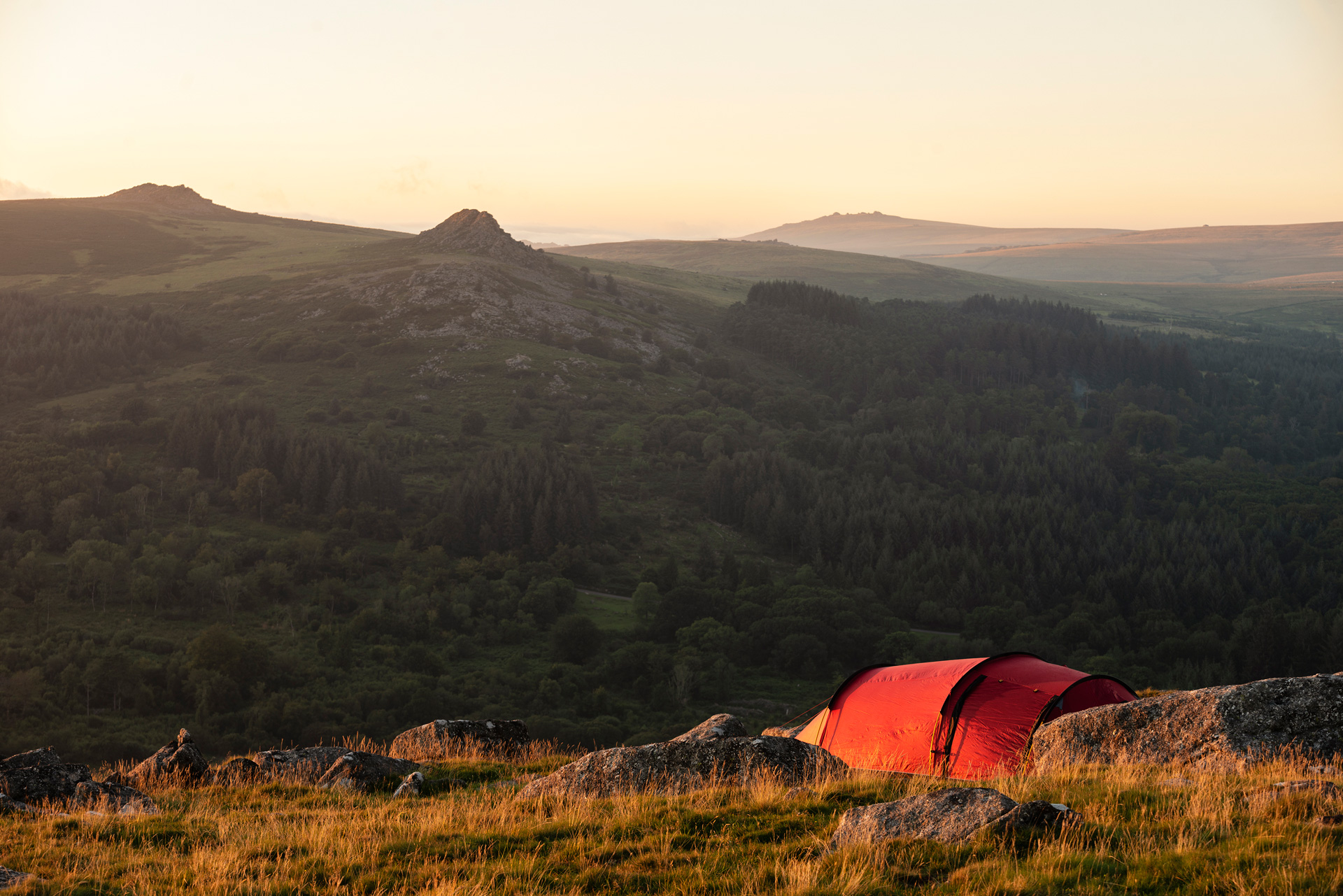Wild camping on Dartmoor is becoming increasingly well known in the UK. Mostly because it’s the only National Park in England with areas where it’s legal to wild camp. What makes Dartmoor special (other than being a fantastic remote wilderness), is that it has unenclosed but privately owned Commons Land. Part of the Dartmoor Commons Act explicitly allows camping in certain areas for no more than two consecutive nights. We’ll get on to exactly what “camping” and “certain areas” means in a minute. Needless to say, it’s only a byelaw so could easily be taken away if people abuse or misuse this privilege.
“The only National Park in England with areas where it’s legal to wild camp”
Where is it legal to wild camp?
The very best place to look is the Dartmoor National Park camping map. Rather than us list out a load of places, this shows you in exact detail where it’s legal to pitch. After that, you should also be at least 20m from any river (about 12 double paces) and at least 100m from a road. The rule of thumb is if someone can see your tent obviously from a road, you haven’t gone far enough. Also stay away from any archaeological sites like stone circles and rows, or hut circles. They’re part of why Dartmoor’s protected and it would be a bit like wild camping in the middle of Stonehenge.
It’s also worth noting that it’s illegal, by the same byelaws which allow wild camping, to sleep in any vehicle overnight at the roadside or in car parks in the National Park.

Finding the perfect spot
Beyond legalities, I can attest that it’s very easy to have an awful night’s sleep on Dartmoor. Here are some tips to make the whole experience more pleasant.
Firstly, look for flat ground! This is often easier said than done on Dartmoor, given the sheer amount of tussock grass and clitter. Think about the slope too – what looks like a shallow incline might be more than enough to slide you downhill overnight. Everyone loves a party at the bottom of the tent at 2am…
Secondly, think about exposure. If the forecast is for wind coming in overnight, try to find a place to pitch that will be out of the wind. Equally, if it’s raining are you sleeping somewhere that will fill up with water overnight. Camping on a tiny island in the middle of a river might look fun, but Dartmoor is home to some of the fastest flooding rivers in the UK. It’s really not worth it – never mind that you’re polluting it by not keeping to the 20m rule.




